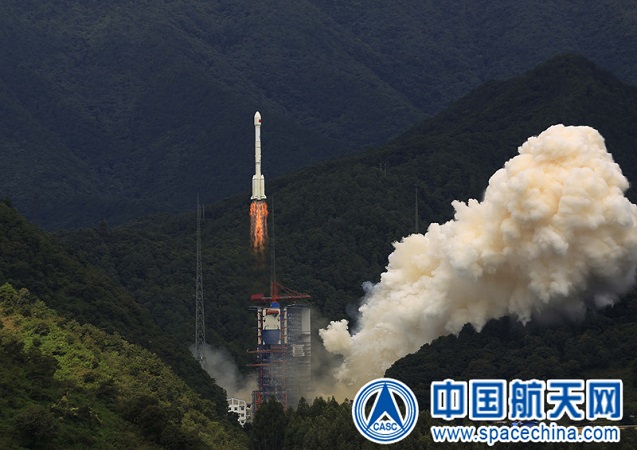At 12:23 p.m. Beijing time (UTC+8) today, China launched a pair of BeiDou navigation satellites – the 15th and 16th from the new generation BeiDou-3M series, and the 39th and 40th BeiDou satellites in total.
The launch took place from Xichang Satellite Launch Centre using the Long March 3B rocket, as with all of China’s BeiDou-3 satellites. However, the launch today differed slightly from the previous launches, in that the Long March 3B’s four boosters were equipped with a booster parachute control system.
This is the first rocket test of China’s planned booster parachute system, which will allow the boosters to land in specific targeted locations after separation, thus providing some measure of landing control. With the booster parachutes, China hopes to avoid the boosters falling unpredictably on areas with human activity, which currently happens on a fairly regular basis.
This launch also marked the 10th launch this year of rockets from China’s Long March 3 series, making it the highest number of launches per year from a single series in China’s space history.
With BeiDou launches China’s Global Navigation Satellite System (GNSS) will be able to offer full regional coverage by the end of this year, by which time the BeiDou “twin satellite” system, as the BeiDou-3M is known by, should comprise 18 satellites serving the Belt and Road countries. China hopes to be able to complete its BeiDou constellation to offer global coverage by 2020.







